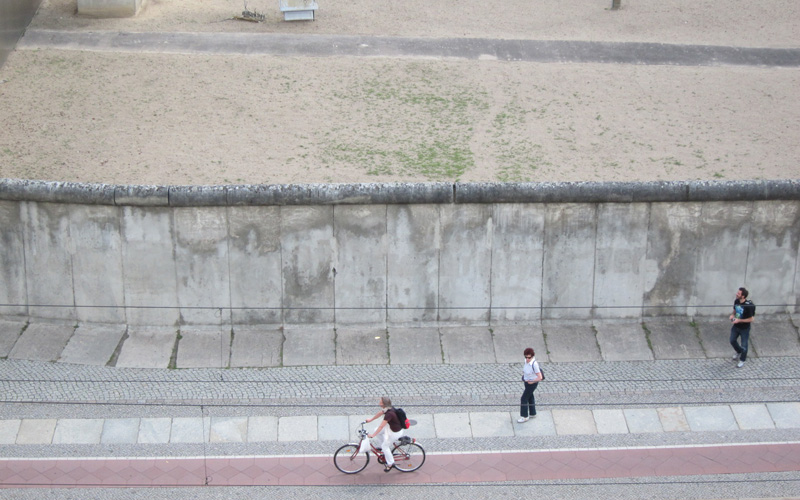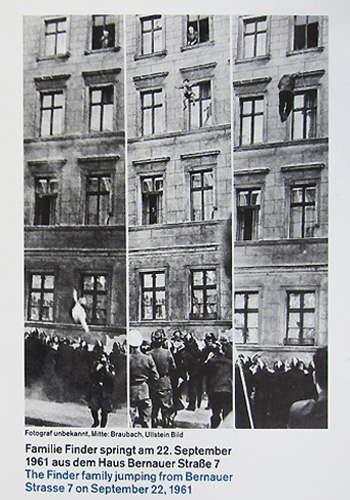
 Before last summer we had visited East and West Berlin in 1985 and looked forward to seeing the changes that occurred in the 23 years since the Fall of the Wall on November 9, 1989. Our cultural subconscious held a cache of images of horrid truths and heartless propaganda: juddering film clips of goose-stepping Nazis and skeletal prisoners, Walter Cronkite’s TV voice over of the Wall’s construction, and AP photos of East Berlin escapees in mid-air jumping to freedom or death from walls and walled buildings. The images form a deep, muddy cold-war pool from which the vitality of modern Berlin emerges, staggering out of the emotional depth and intellectual complexity.
Before last summer we had visited East and West Berlin in 1985 and looked forward to seeing the changes that occurred in the 23 years since the Fall of the Wall on November 9, 1989. Our cultural subconscious held a cache of images of horrid truths and heartless propaganda: juddering film clips of goose-stepping Nazis and skeletal prisoners, Walter Cronkite’s TV voice over of the Wall’s construction, and AP photos of East Berlin escapees in mid-air jumping to freedom or death from walls and walled buildings. The images form a deep, muddy cold-war pool from which the vitality of modern Berlin emerges, staggering out of the emotional depth and intellectual complexity.
The marks of last centuries’ history, written with bullets, bombs and barbed wire, still remain visible in places but disappear quickly with the massive new architectural construction of the last two decades. This March protests arose over the demolishing of a long and fantastically graffitied vestige of the Berlin Wall, called the East Side Gallery (listed below), to make way for luxury condos–this in a city only 3/4 occupied. Formerly a symbol of oppression, the Wall has been claimed as a battle trophy by artists and activists who have repossessed the emotional weight of the Wall’s history as a symbol of self expression and threatened freedom. Among the works at the East Side Gallery Dmitri Vrubel’s street art perversely commemorates Erich Honecker and Leonid Brezhnev’s historic kiss, passionately celebrating the 30th anniversary of Soviet control of East Germany, “My God. Help Me Survive This Deadly Love”.
